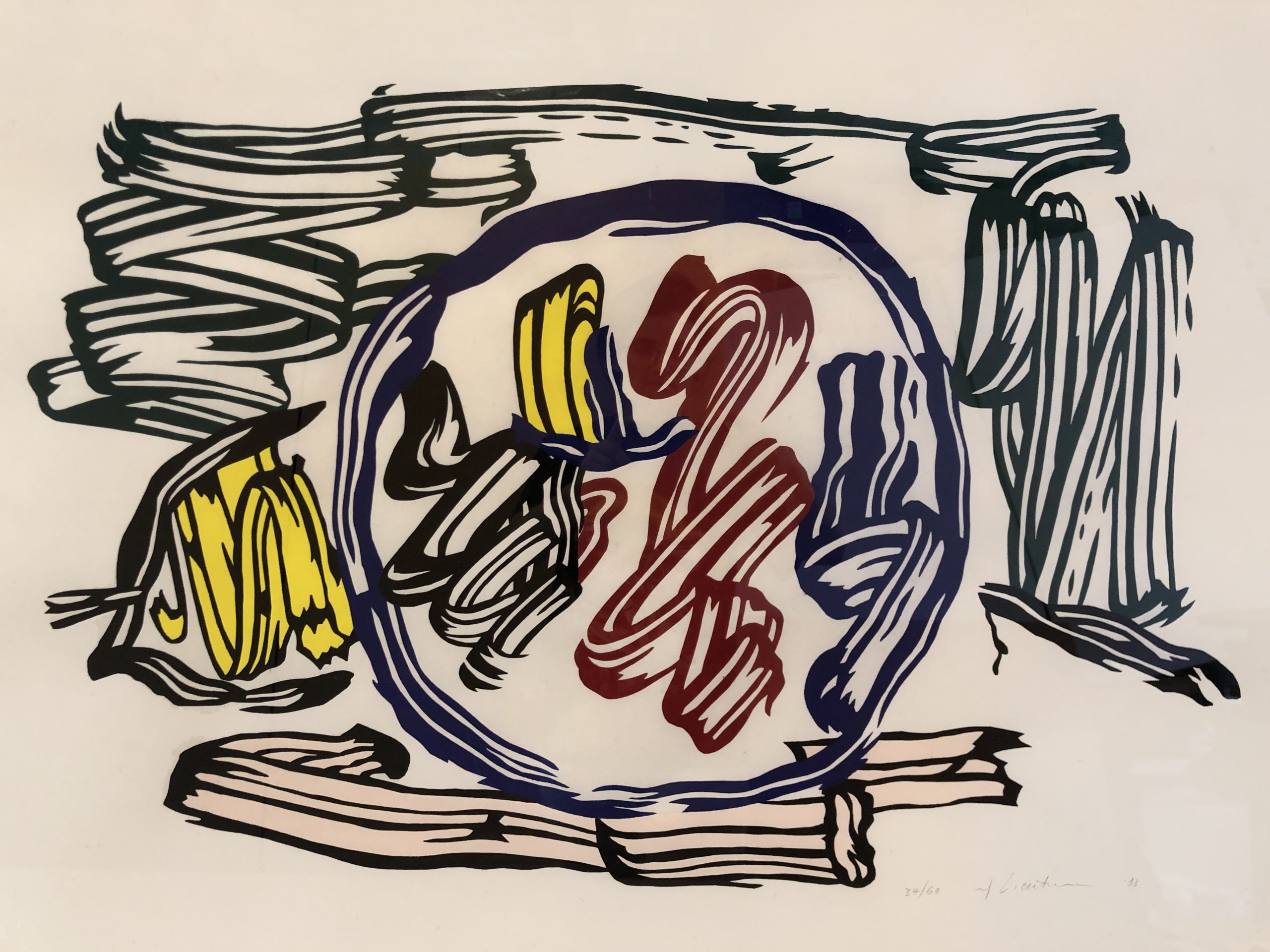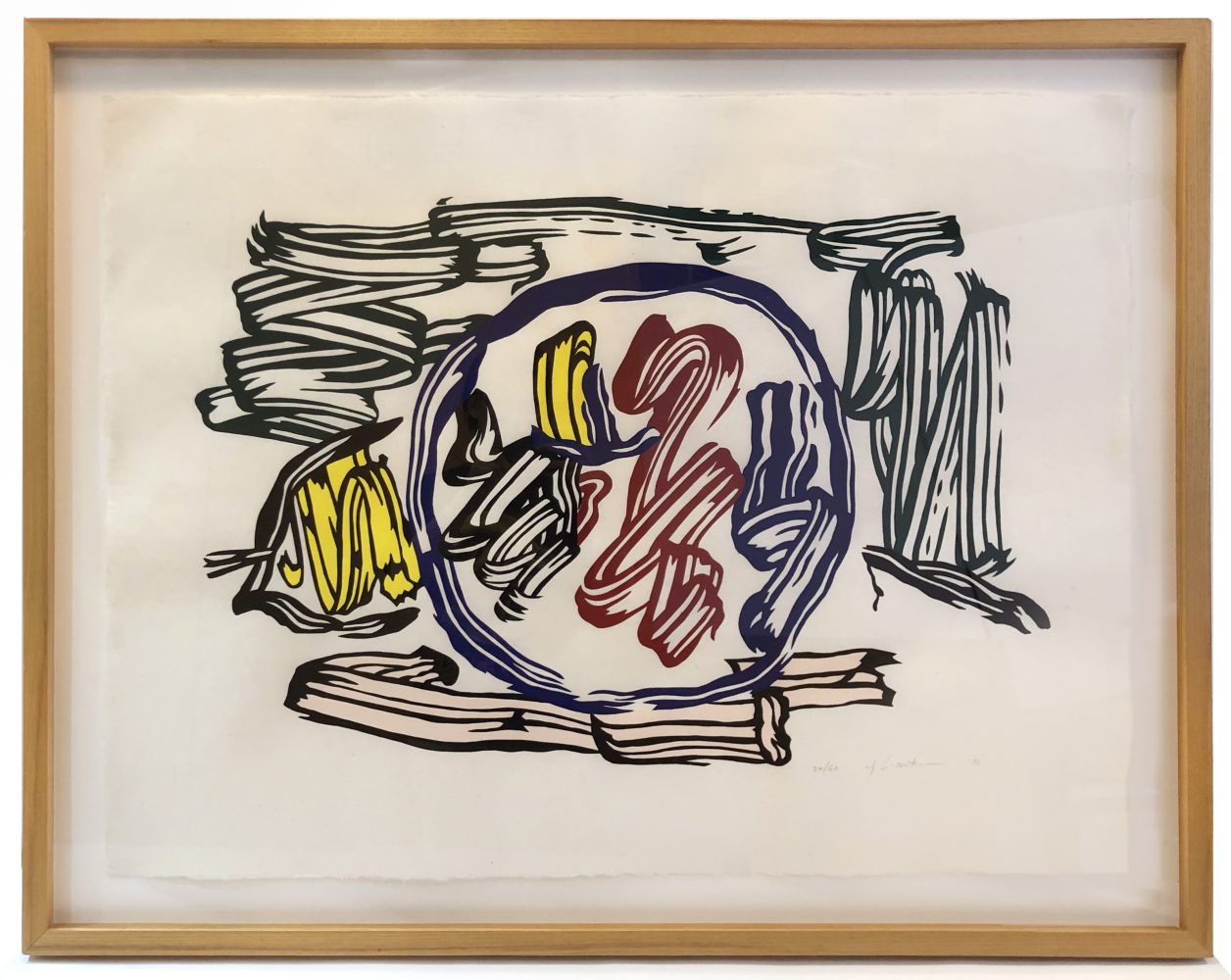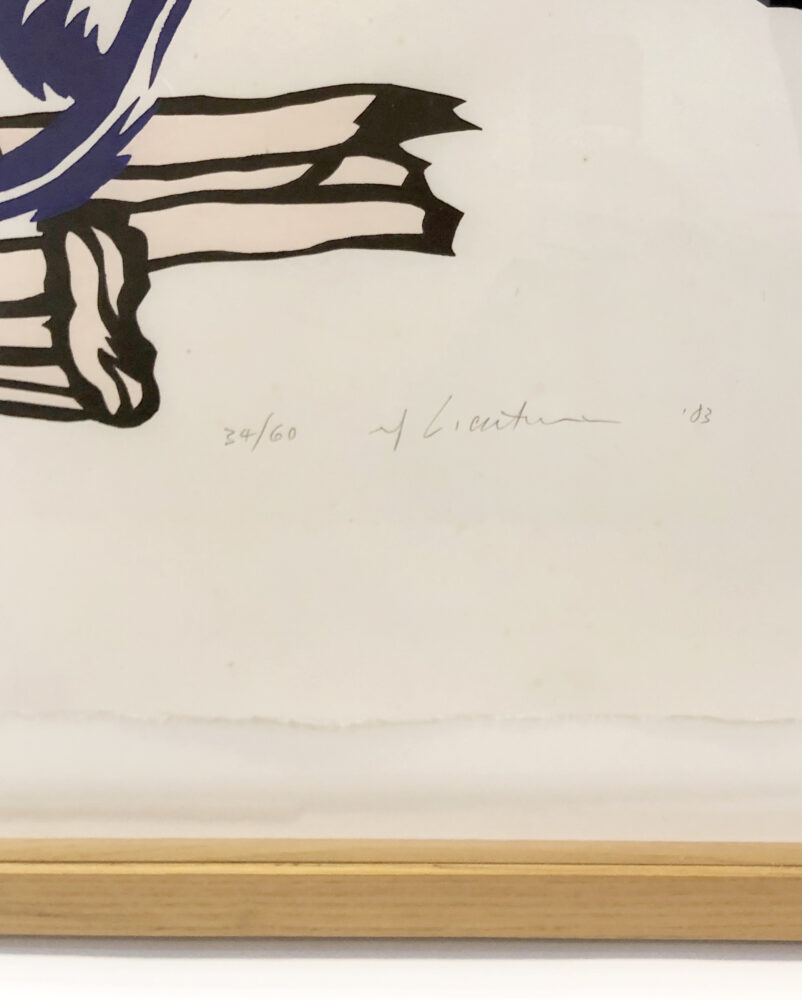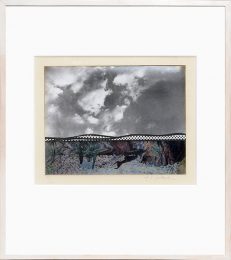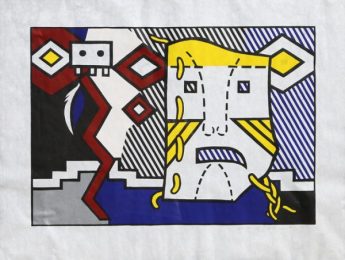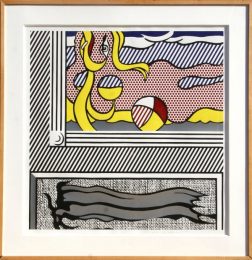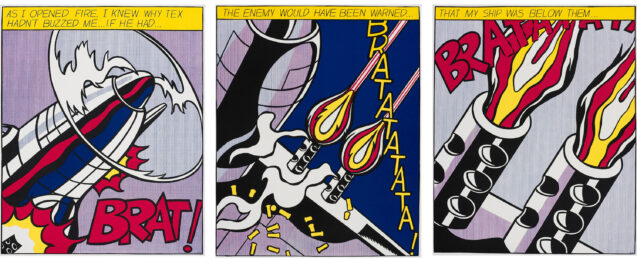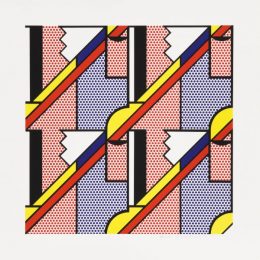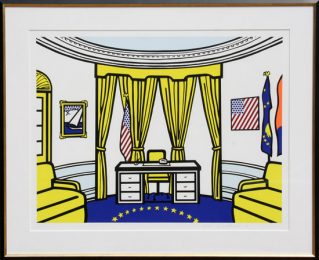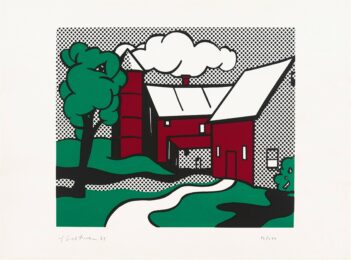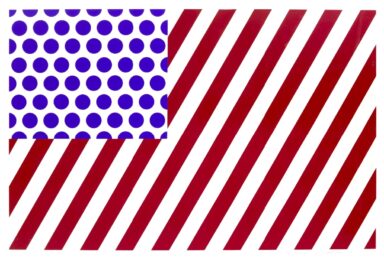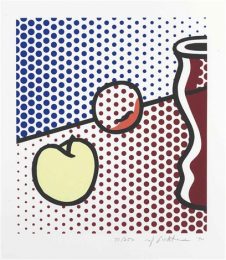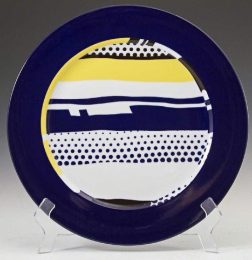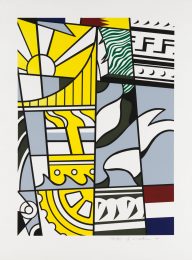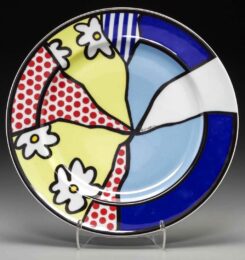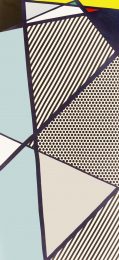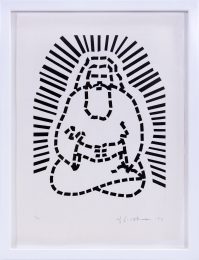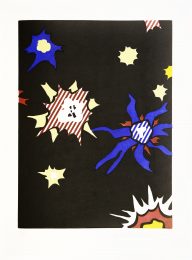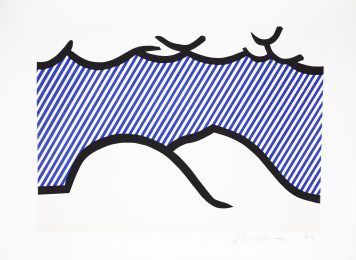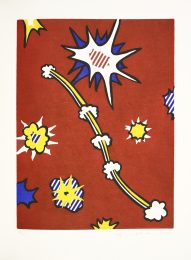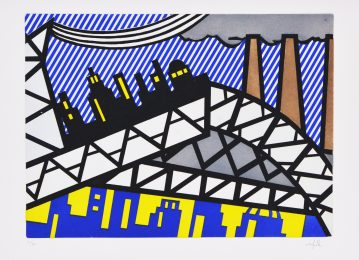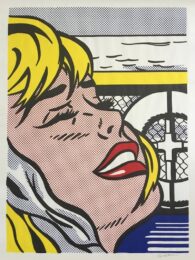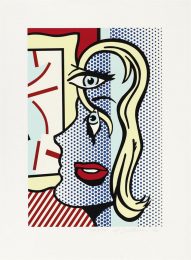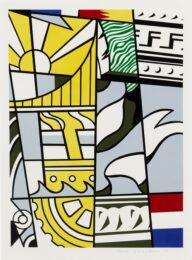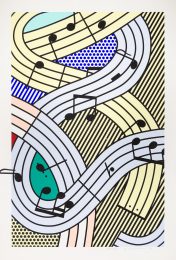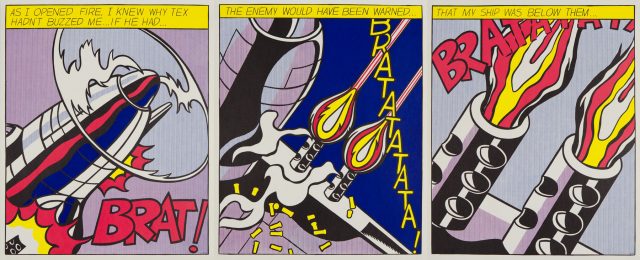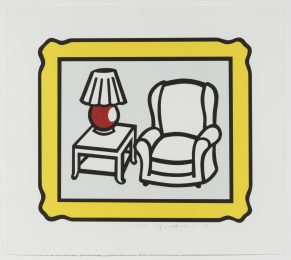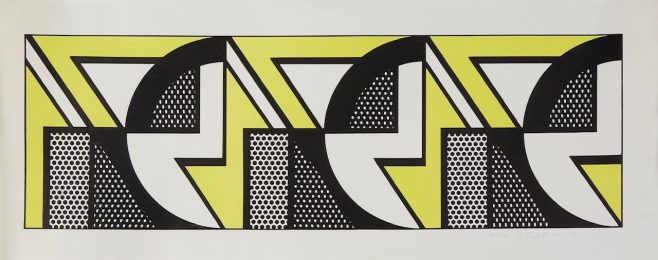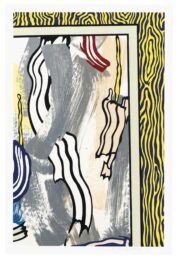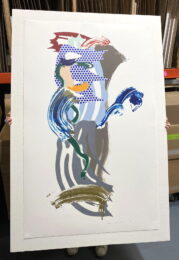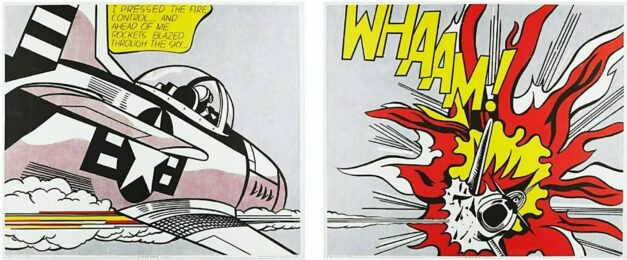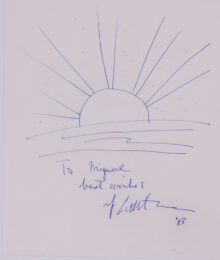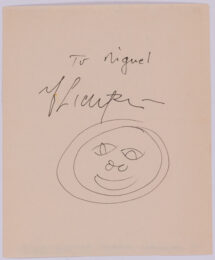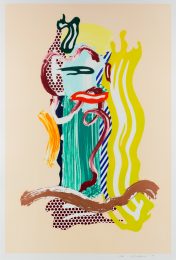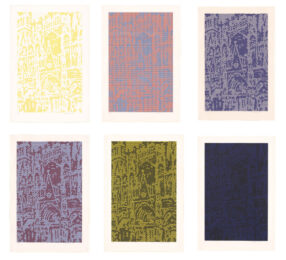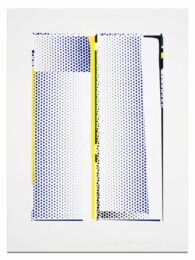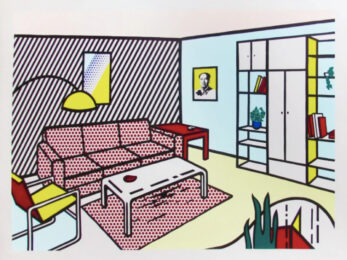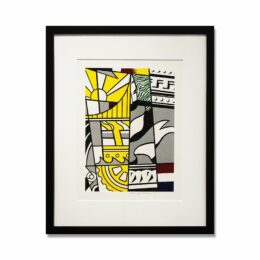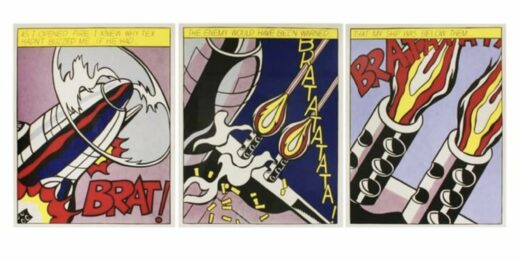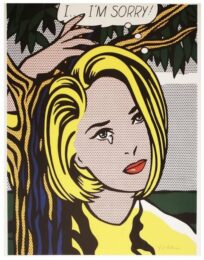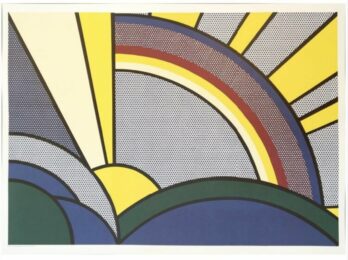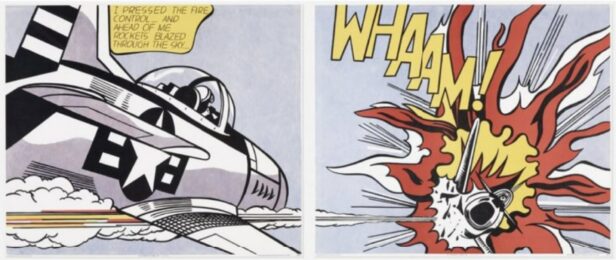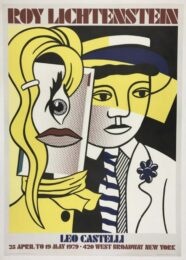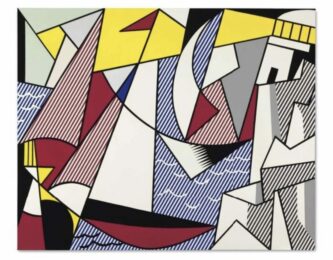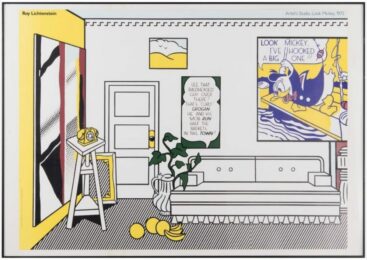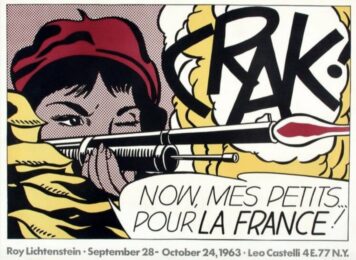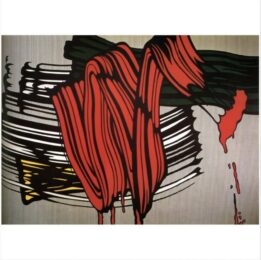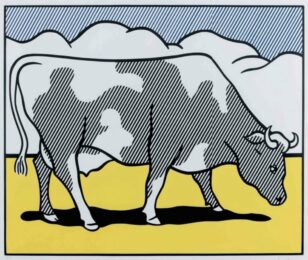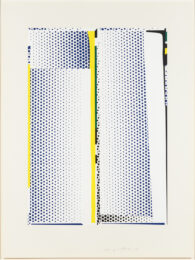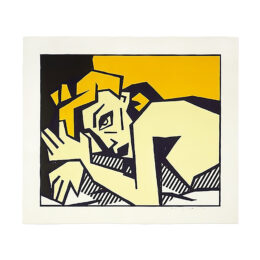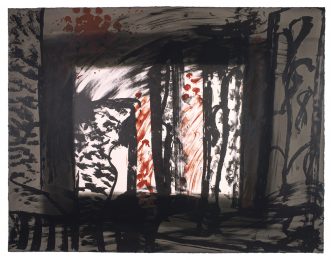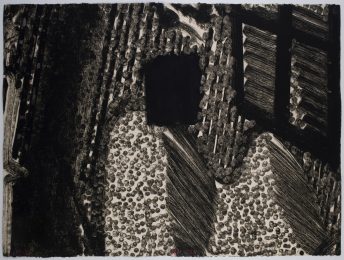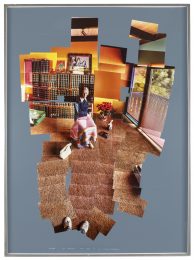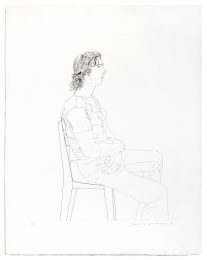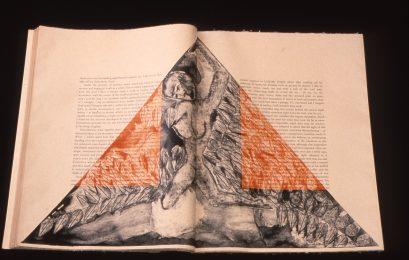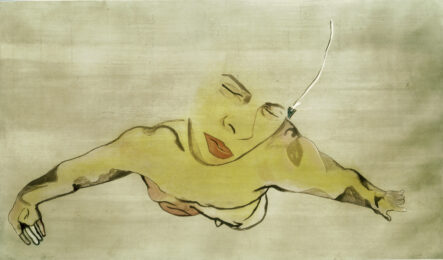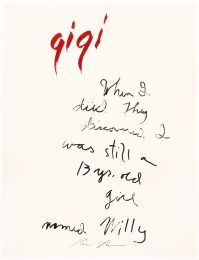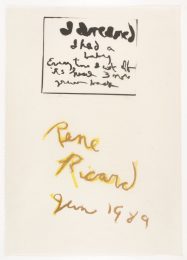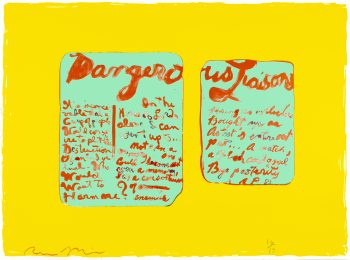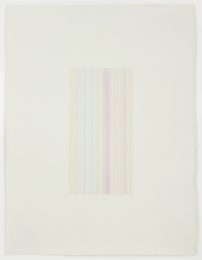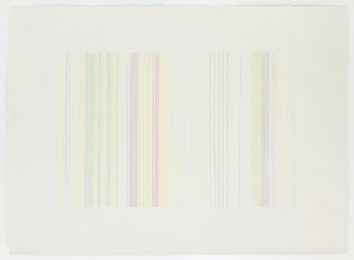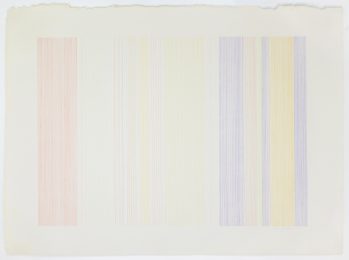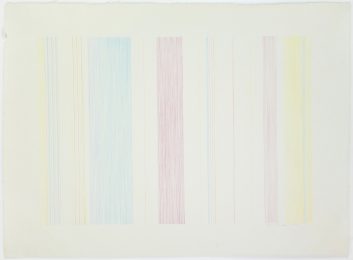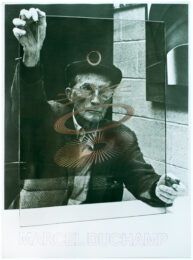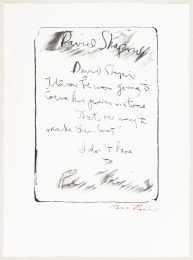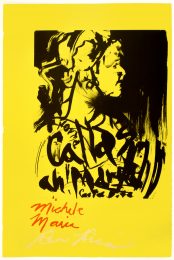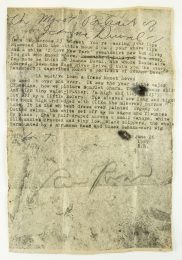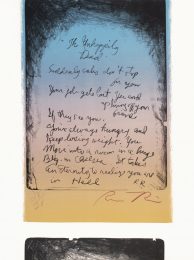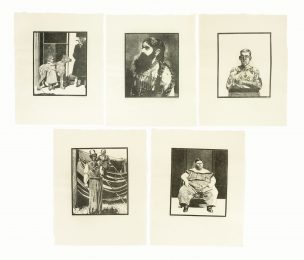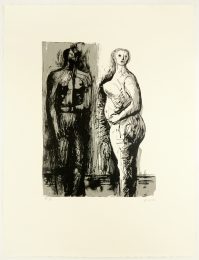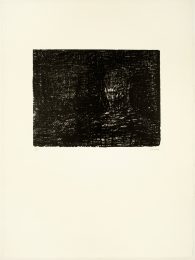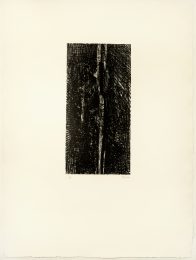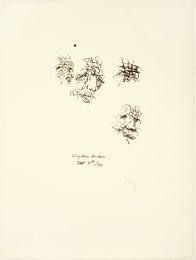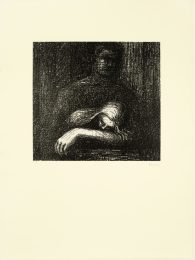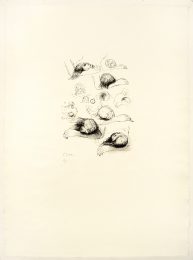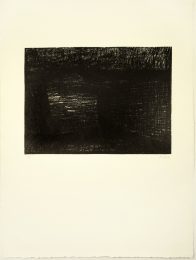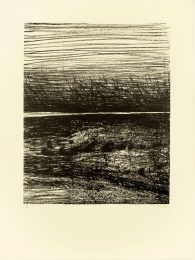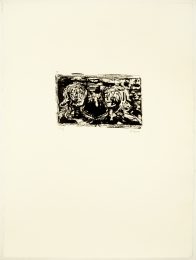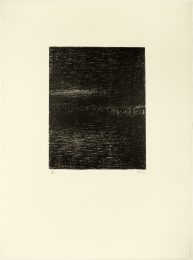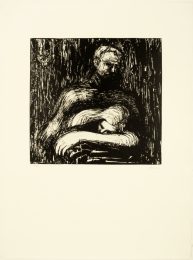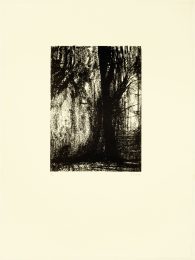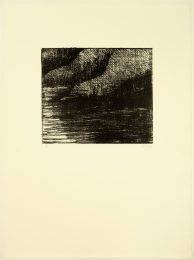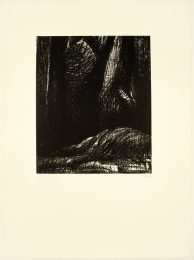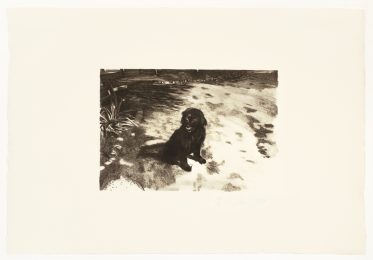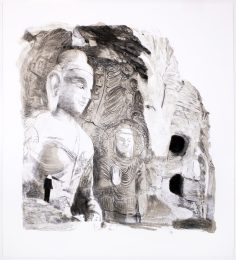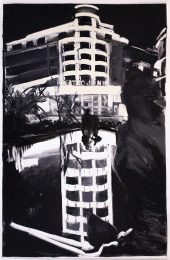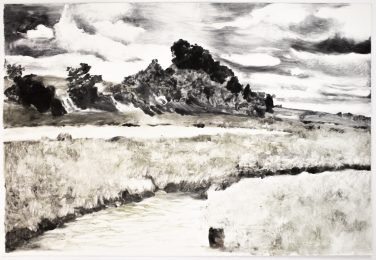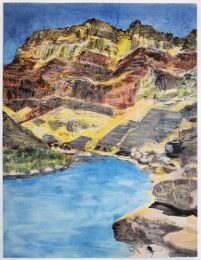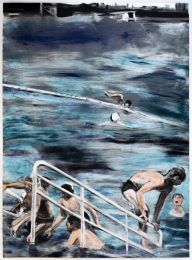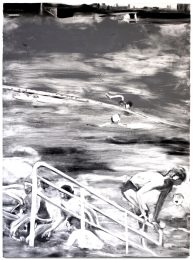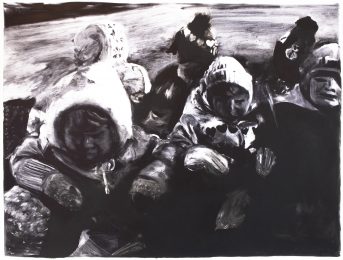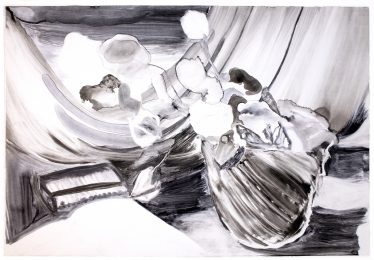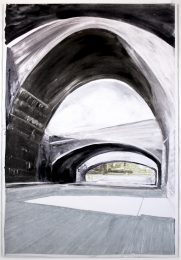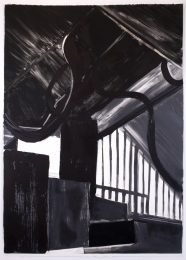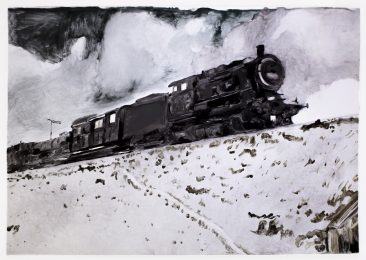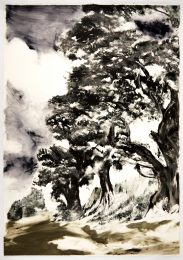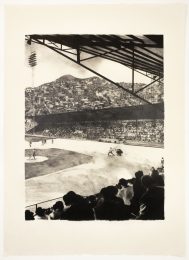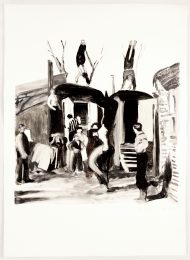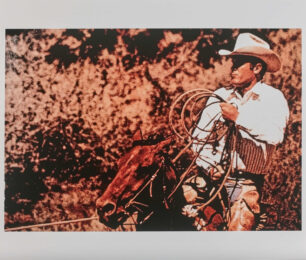Details — Click to read
This Roy Lichtenstein woodcut from the Seven Apple Woodcuts portfolio is an electric take on the humble still life. Striated black brushstrokes sketch the outline of an apple and a lemon, filled with yellow, navy, and black red from left to right in graphic ribbons of color that fall in folds towards the viewer. The black background is suggested by a gestural stroke, which loops briefly behind the fruit to indicate its position in the scene.
Roy Lichtenstein first began painting brushstroke still lifes with apples in 1980. Petersburg Press approached Lichtenstein with the idea of making woodcuts in the traditional Japanese style — on Japanese paper, with water based ink applied and printed by hand. The artist’s brush stroke still life paintings and collages formed a basis for the Seven Apple Woodcuts portfolio, undertaken in 1982.
While Lichtenstein focused on contemporary images in his art, he drew from art history for inspiration. Lichtenstein’s studies for the portfolio were painted in simple, calligraphic strokes on clear mylar, mimicking the ink paintings and flattened perspective of traditional Japanese art. The collaged still life images were transferred photographically to cherry wood blocks. The artist then hand-carved the blocks, reproducing the striations and contours of the original brushstrokes, and heightening the contrast so that each brushstroke contained no gradation in color once printed.
After water based ink was applied by brush to the blocks, each one was printed by hand several times. This technique created an entirely different texture than the oil based inks used in Lichtenstein’s earlier prints. The surface of the water based ink is especially enhanced by the specially chosen Kizuki Hosho paper. The editions were printed by Michael Berdan, who had lived and trained in Japan; and Shigemitsu Tsukaguchi, master printer from Japan who shared the proofing and edition printing with Diane Hunt.
The result destabilizes the viewer’s perspective: languid entanglements of flattened, elongated shapes that move between visual planes like M.C. Escher’s staircases. Oxblood, two shades of yellow, black, forest green, light grey, graphite, and touches of pale peach comprise Lichtenstein’s palette, each shape printed in one color, save the yellow strokes which are outlined in crisp black. According to Ruth Fine (Curator, National Gallery of Art, Washington D.C.) Lichtenstein has characterized these works as ‘quiet and elegant.’
One of the most recognizable aspects of Lichtenstein’s style is the meticulousness with which his work is painted and printed. Or rather, how impeccably he conveys the impression of machine-like precision. Upon closer inspection, Lichtenstein’s richly textured texture collages and melodramatic comic book graphics reveal evidence of the artist’s hand: hand-painted Ben-Day dots, black brushstrokes amid smooth outlines. Lithographs and screenprints neatly reproduce this range of color and line, and they constitute the majority of Lichtenstein’s print oeuvre. This work from the Seven Apples Woodcuts portfolio is all the more rare and delightful for its medium of hand-carved woodcut, printed on Iwano Kizuki Hosho paper. The smooth, cream-colored paper is handmade in the Ibaraki prefecture by National Living Treasure Ichibei Iwano, the 9th generation in his family to do so.
Paradoxically, while the use of woodcut today imbues the Seven Apples portfolio with warmth and unique artistry, woodcuts were the first form of mass reproduction in 17th century Japan, functioning as the screen prints of the time. Could there be a more poetic medium for an artist fascinated with commercial overexposure, repetition and seriality?

